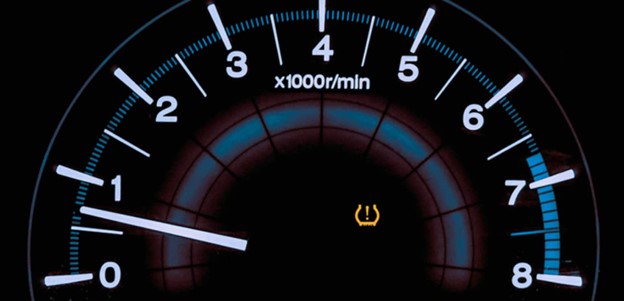What is TPMS and How Does it Work?

In response to a surge of accidents due to underinflated tires, the US government passed the Transportation Recall Enhancement, Accountability and Documentation (TREAD) Act. One of the outcomes of this legislation was that most vehicles sold after 2007 include a TPMS system of some kind.
Your vehicles Tire Pressure Monitoring System (TPMS) is designed to warn you when the pressure in one or more of your tires may be low or require service. The TPMS warning indicator is the yellow symbol shown above (horseshoe shape with an exclamation point).
Why is an underinflated tire so important?
- Underinflated tires cause poor fuel economy. The Department of Transportation estimates that underinflated tires waste 2 billion US gallons of fuel each year.
- The life of your tires is not as long when you drive on underinflated tires. When your tires are underinflated the internal temperature rises and causes a breakdown of material bonds inside the tire. Once a tire is weakened, it won’t heal after being re-inflated to the proper pressure. So if a tire has been allowed to run low for a period of time it may need to be replaced.
- Underinflated tires will affect the handling of the vehicle. Properly inflated tires add greater stability, braking and a safer experience for the driver.
- According to the U.S. Department of Transportation, vehicles with under-inflated tires release more than 300 billion pounds of carbon monoxide in the United States each year. By monitoring tire pressure on your vehicles, you can ensure tires are properly inflated so you can help reduce the emission of dangerous pollutants.
It is not uncommon for the TPMS senor to activate when the temperature drops. The air gets denser and takes up less space, meaning reduced pressure from the air in your tires. When the temperature turns colder check your tire pressure and add air as needed — think of adding a bit of air like topping off your gas tank.
When you see the TPMS warning indicator on your vehicle’s instrument panel, immediately check your tire pressure or stop our shop so that we can do it for you. If your alert is still displayed after setting the tire pressure, your TPMS may need to run through a “relearn” process or even require a TPMS sensor replacement. We can also examine your tires for damage, such as a puncture, to explain the air loss.